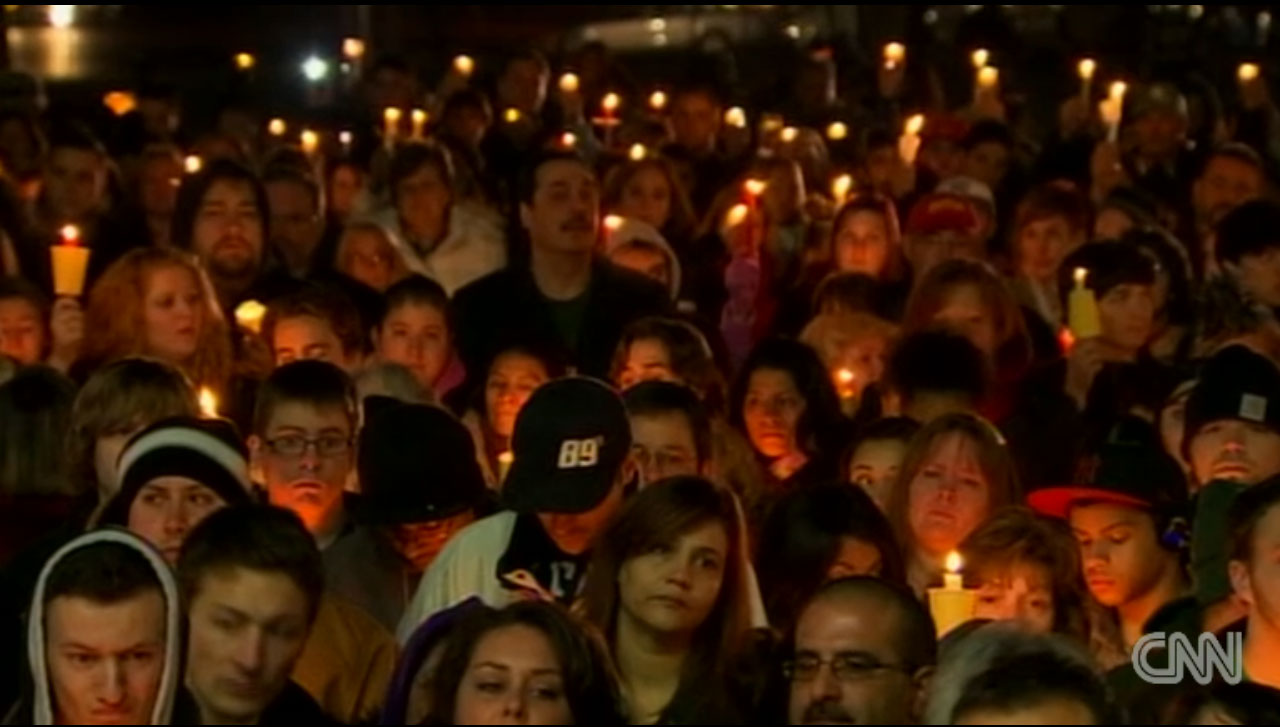Mass Shootings Are Contagious

Virginia Tech. Sandy Hook. Charleston. Not only are mass shootings tragedies in their own rights, but they also appear to be contagious.
Mass shootings spawn subsequent mass shootings, new research finds. The researchers discovered statistical "clusters" of shootings in which four or more people die, the standard definition of a mass shooting. School shootings also cluster, said study researcher Sherry Towers, a professor of mathematical and computational modeling at Arizona State University.
"On average, one school shooting inspires 0.22 other school shootings," Towers told Live Science. "And on average, one mass shooting inspires 0.3 more mass shootings."
In other words, Towers said, "if you have five school shootings, you'll have one that was inspired by one that happened in the past." [5 Milestones in Gun Control History]
Tragic inspiration
Towers and her colleagues were prompted in January 2014 to study whether mass shootings inspire each other. She was due for a meeting at Purdue University in Indiana when word came that there had been a shooting in a neighboring university building. A 21-year-old student named Andrew Boldt was shot and then stabbed by another student. The killer committed suicide in prison nine months later.
"I remembered that there had been three other school shootings in just slightly over a week prior, and it just seemed like an unusual number to me," Towers said.
Sign up for the Live Science daily newsletter now
Get the world’s most fascinating discoveries delivered straight to your inbox.
The idea that violence might be contagious is not new. Suicides often cluster, in a phenomenon known as suicide contagion, in which vulnerable people are inspired to take their own lives after reading about the details of previous suicides. In an attempt to stop the contagion, many media outlets abide by voluntary reporting standards to not sensationalize suicides.
Likewise, many experts in mass shootings have suspected the notoriety of previous killers inspires new shooters. Newspaper reports can give unstable people something to emulate, Tony Farrenkopf, a forensic psychologist in Portland, Oregon, who has created psychological profiles of mass shooters, told Live Science in 2012 after the shooting at Sandy Hook Elementary School.
"We're the first to quantify what has long been suspected," Towers said.
Regular shootings
There is no national government database of mass shootings, so Towers and her colleagues turned to USA Today, which had compiled an online database of mass killings committed by all means from 2006 to 2013. There were 232 events in that database, 176 of which involved firearms. [Fight, Fight, Fight: The History of Human Aggression]
The researchers also gathered data from the Brady Campaign to Prevent Gun Violence, which keeps statistics on school shootings (188 between 1998 and 2013) and mass shootings in which at least three people are shot, but not necessarily killed (477 events between 2005 and 2013). To prevent overlap between the USA Today and Brady Campaign shooting data, the researchers included shootings from the Brady data in which at least three people were injured and three or fewer were killed, a total of 376 incidents.
The data revealed a stark reality: Mass shootings in America are not uncommon at all. On average, a mass shooting that leaves four or more people dead occurs every 12.5 days in the United States. School shootings occur every 31.6 days, on average.
The researchers compared shootings by state with state prevalence of serious mental illness and gun ownership. This analysis showed that the higher the level of gun ownership in a state, the more mass shootings that state experienced. After gun access was taken into account, mental illness rates did not significantly predict mass shootings.
Contagious violence
The researchers found that both mass shootings and school shootings were contagious, with a spike in additional incidents lasting about 13 days after an initial shooting.
Shootings in which fewer than three people died were not contagious. Towers and her colleagues said they can't prove why with their research, but they suspect media coverage may explain why some shootings spur copycats and others don't. The vast majority of shootings with three or fewer victims were only reported in the local news and did not reach a national audience, Towers said. In contrast, mass shootings and school shootings typically went national.
"The contagion that appears to be apparent in the mass killings and school shootings may have something to do with the media coverage," Towers said.
This doesn't mean the media shouldn't report on mass shootings, Towers said. But voluntary efforts to de-emphasize the killer's name and portrait might help stave off additional shootings.
The Charleston shooting does not seem to have spawned copy cats; reports of gunfire at the Navy Yard in Washington, D.C. today (July 2) led to a lockdown, but no evidence of a shooter or victims. However, Towers noted, there have been three fires at predominately black churches in the South since the Charleston shooting that are under investigation for arson. If those fires are shown to be hate crimes, it could suggest the racial motivations of the Charleston shooting are contagious, too, Towers said.
Towers and her colleagues reported their findings today in the journal PLOS ONE.
Follow Stephanie Pappas on Twitter and Google+. Follow us @livescience, Facebook & Google+. Original article on Live Science.

Stephanie Pappas is a contributing writer for Live Science, covering topics ranging from geoscience to archaeology to the human brain and behavior. She was previously a senior writer for Live Science but is now a freelancer based in Denver, Colorado, and regularly contributes to Scientific American and The Monitor, the monthly magazine of the American Psychological Association. Stephanie received a bachelor's degree in psychology from the University of South Carolina and a graduate certificate in science communication from the University of California, Santa Cruz.









